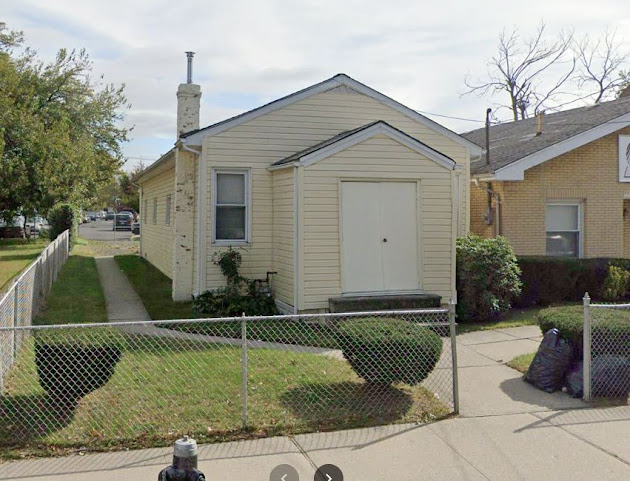181 Harbor Road - Italian Mission Church, ca. 1940
This church is not so much lost as it was relocated and transformed. In 1919, Rev. Dr. Sante Buzzalini began preaching in Mariners Harbor, particularly to the Italian immigrants. He served out of Summerfield Methodist Church on Harbor Road. The goal was to found an English-language Italian congregation.
In 1922, after several years of meeting in Summerfield and open-air preaching, Rev. Buzzalini was granted permission to acquire a portable chapel. It was put in place at 181 Harbor Road where it still stands today. It is no longer a Methodist chapel, however.
181 Harbor Road, 2019
In 1939, following tremendous growth, the decision was made to build a more permanent building for the Italian congregation. A second chapel had been established by Rev. Buzzalini in nearby Bullshead that was to be combined with the Harbor Road chapel, so a central location on Forest Avenue was chosen. In 1939, Holy Trinity Methodist Episcopal Church opened. To quote the church's history page:
The church was built directly on the bedrock which gives Graniteville its name, and made of blocks from the quarry which was only a few hundred yards away.
During the great Methodist shakeout of the late sixties and early seventies, Trinity Methodist went through several changes. In 1959, Holy Trinity merged with Graniteville Methodist, and in 1960 the name was changed to Christ Methodist Church. In 1972, Asbury Methodist and Dickenson Methodist merged. This new congregation merged with
Christ United Methodist (the United had been added in 1972 to reflect a merger between larger Methodist church bodies) in 1974, retaining the Christ United name.
The old Harbor Road chapel has been a Pentecostal congregation of one sort or another since at least the forties. According to a commenter several years ago, it was a Pentecostal congregation from the moment the Rev. Buzzalini moved out. Originally, it appears to have served as the Refugee Church of Christ. In 1947, the building and the present sanctuary at 183 Harbor Road, were purchased by the United Pentecostal Church. Today it's called Pentecostal Tabernacle Church, a congregation of the United Pentecostal Church, a oneness denomination.
Christ United Methodist Church, 1890 Forest Avenue - 2022























































